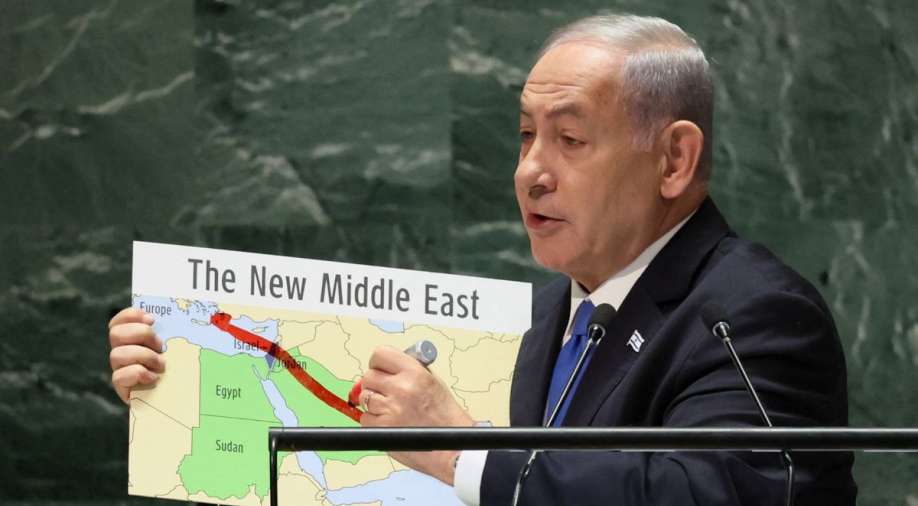Tensions have escalated between India and Canada following Canadian Prime Minister Justin Trudeau’s assertion in Parliament that the Indian government may have “potential links” to the killing of Khalistani terrorist Harmeet Singh Nijjar in Canada. He went ahead with the accusations against India, asking the latter to allow justice to take its course.
After rebutting the accusations, India replied by temporarily halting visa services for Canadians. This situation not only has ramifications for trade and immigration but also holds the potential to affect the relationships these countries share with their Western allies.
The United States, for the first time since diplomatic tensions, confirmed officially that there was “shared intelligence among Five Eyes partners” which informed Canadian Prime Minister Justin Trudeau about the Indian government’s possible involvement in the killing. But what is the Five Eyes, and why has it taken centre stage?
trending now
Understanding the Five Eyes Alliance
The Five Eyes Alliance is characterised by a unique multilateral arrangement where partner countries share a wide range of intelligence, united by common principles of rule of law, robust human rights, and a shared language, according to the The National Counter intelligence and Security Center.
This alliance plays a crucial role in safeguarding their shared national interests by facilitating information exchange.
The Five Eyes, often referred to as FVEY, constitutes a coalition consisting of five intelligence agencies:
- United States
- United Kingdom
- Australia
- New Zealand
- Canada
Historical roots and evolution
The origins of the alliance trace back to World War II when the UK and the US decided to share intelligence after successfully breaking German and Japanese codes.
The UKUSA agreement, which Canada joined in 1949, and later New Zealand and Australia in 1956, solidified the alliance.
While its existence was known since the 1980s, the official acknowledgement of the UKUSA agreement came in 2010 when its files were released.
Functioning of the Five Eyes Alliance
The Five Eyes countries engage in intelligence gathering and security cooperation, aligning closely in recent years due to shared interests, such as addressing the rise of China.
They maintain this closeness through the Five Eyes Intelligence Oversight and Review Council, an entity that facilitates the exchange of views, best practices, and annual in-person meetings among non-political intelligence oversight and review agencies of the member countries.
Also watch | Nijjar ran arms training camps in Canada, funded attacks in India: Intel
Despite their proximity, the Five Eyes countries do not always align in their foreign policies. Notably, New Zealand’s stance on certain Chinese actions differs from that of the other four countries due to its deep trade ties with China. The US has also sought to exert its influence through other groupings like the Quad and AUKUS, involving like-minded countries on security matters.
Who was Hardeep Singh Nijjar?
Hardeep Singh Nijjar had affiliations with the banned Indian separatist group Sikhs for Justice (SFJ). Within the SFJ hierarchy, he held the position of ‘Number 2’ after Gurpatwant Singh Pannun. Nijjar’s origins trace back to Jalandhar’s Bharsingh Pura village, and he relocated to Canada in 1996, reported ANI.
Although initially a plumber in Canada, Nijjar’s financial standing saw a remarkable uptick in recent years due to his involvement in pro-Khalistan activities.
Nijjar’s engagement with terrorism commenced with his membership in Babbar Khalsa International, led by Jagtar Singh Tara.
Later, he established his own group, Khalistan Tiger Force (KTF). He played a substantial role in identifying, connecting, training, and financing Khalistani cells in India, leading to over 10 FIRs against him.
In 2014, Nijjar masterminded the assassination of self-proclaimed spiritual leader Baba Bhaniara.
In 2015, he conducted a training camp in Canada for Mandeep Singh Dhaliwal, who was subsequently dispatched to Punjab with the mission of targeting Shiv Sena leaders. Mandeep was arrested in June 2016.
In November 2020, Nijjar partnered with fellow gangster Arsh Dalla, residing abroad, and they became involved in the murder of Manohar Lal, a follower of the Dera Sacha Sauda, in 2021.
The expulsion of the Indian diplomat adds another layer of complexity to the already fraught relationship between Canada and India.
A sophisticated financial network
The National Investigation Agency (NIA) has uncovered a sophisticated financial network connecting prominent Khalistani militants and gangsters based in Canada to funds generated in India through extortion, smuggling, and various illicit activities.
This illegal wealth not only sustains their violent undertakings in both India and Canada but also finds unexpected outlets for investment, including ventures such as yachts, movies, and even the Canadian Premier League.
The investigation has shed light on how the money amassed by gangsters through activities like extortion, smuggling, and other illegal means has been channelled into clubs and bars in Thailand as part of their investment strategy, underscoring the international scope of these financial operations, reported the Hindustan Times.
The NIA’s probe has unveiled a series of financial transactions spanning from 2019 to 2021. These transactions involved the transfer of sums ranging from ₹5 lakh ($6.5K) to ₹60 lakh ($72.2K) by gangster Lawrence Bishnoi to recipients in Canada and Thailand through the hawala system.
Lawrence Bishnoi, who collaborated closely with Khalistani groups in Canada, particularly with Babbar Khalsa International (BKI) leader Lakhbir Singh Landa, played a pivotal role in orchestrating this illicit operation.
According to the NIA’s charge sheet, the funds collected through activities such as extortion, illegal liquor trade, arms smuggling, and other unlawful endeavours were funnelled to Canada, specifically to an individual known as Satbir Singh alias Sam. These funds served a dual purpose – further investment and financing the radical activities of pro-Khalistan elements (PKEs).
)
)
)
)
)
)
)
)
)
)
)
)
)
)